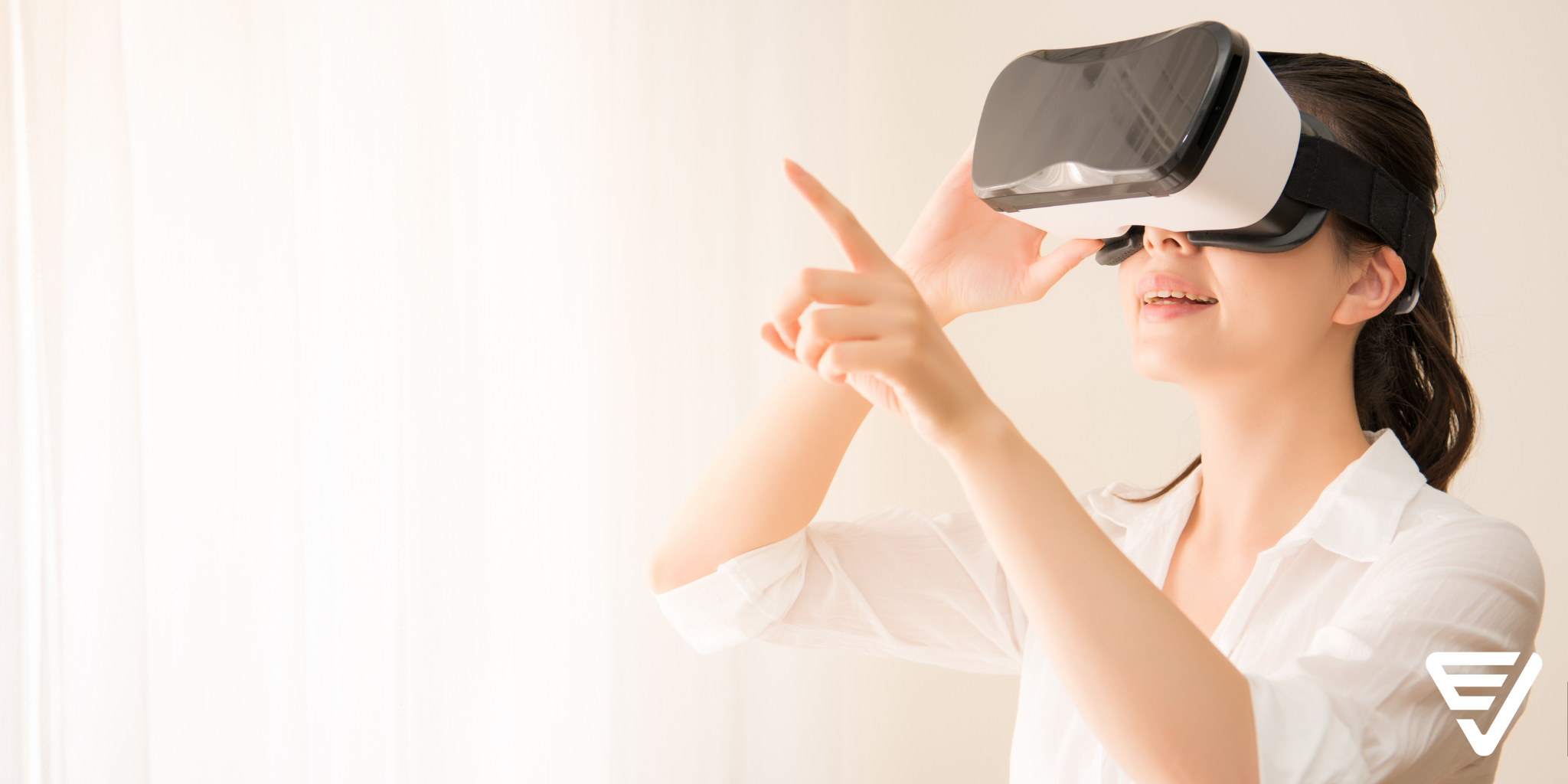
Looking Ahead Into AR And VR Trends And Forecasts
The world is evolving its digital footprints by creating wonders on screens, buttons, and pixels in the realms of Augmented and Virtual Reality. These technologies are not just a product of technological novelties but an integral component of our digital landscape. The journey of niche innovations to mainstream phenomena is nothing but a short of remarkable and altering way of how we perceive and engage with the world around us. We couldn't help but create a blog post about this technology's projected future trends because it's already grabbing people's attention.
10 Future Trends and Predictions of AR and VR
As we stand on the brink of tomorrow's tech frontier, Augmented Reality (AR) and Virtual Reality (VR) are poised for transformative shifts. From niche applications to integral aspects of our digital existence, these immersive technologies continue to redefine how we engage with the digital realm.
1. AR avatars
AR avatars, pioneers in immersive tech, seamlessly blend our physical and virtual selves. These digital counterparts redefine communication and self-expression, acting as personalized extensions in AR-enhanced environments. As users explore, avatars become a dynamic canvas for identity exploration, fostering creative connections between the real and virtual worlds. This trend foresees a shift in how we perceive digital reflections, unlocking new dimensions of personal expression and connection. As AR avatars evolve, we anticipate a surge in applications across industries, from virtual meetings to personalized marketing experiences.
2. AR Cloud
The AR Cloud, a technological marvel, creates a shared digital layer above the physical world. Fostering dynamic and collaborative environments, it enables location-based interactions and augmented experiences. This interconnected digital fabric sparks innovation in spatial computing, location-based services, and immersive storytelling. As the AR Cloud evolves, it promises shared digital memories and a seamless integration of the virtual and physical, transforming how we interact with our surroundings. This convergence of digital and physical realities also sets the stage for a new era in augmented navigation and contextualized information retrieval.
3. VR Social Spaces
VR social spaces transcend traditional boundaries, offering backdrops for social and professional interactions. Users engage in shared experiences, forging connections that bridge geographical distances. The integration of avatars within these spaces enriches communication with non-verbal cues and spatial awareness. As VR technology advances, we anticipate an expansion of diverse virtual environments tailored to various social contexts, redefining the way we connect in the digital age. The emergence of VR as a social platform also hints at the potential for immersive collaborations and shared virtual experiences that go beyond traditional communication norms.
4. Healthcare Innovations
AR and VR innovations revolutionize healthcare, enhancing training, diagnosis, and patient care. AR avatars aid precision in surgical settings, transforming operating rooms. VR applications democratize healthcare, ensuring patient access to specialized care regardless of location. These innovations impact medical education, producing a generation of highly skilled healthcare professionals. The fusion of technology and healthcare promises inclusive and patient-centric practices. In the future, we anticipate further integration of AR and VR in telemedicine, offering enhanced remote diagnostics and treatment options.
5. AR Wearables
AR wearables, like smart glasses, seamlessly integrate into daily life, enhancing our understanding of the world. These devices merge the physical and digital realms, offering real-time information and personalized data overlays. Design and comfort considerations ensure a symbiotic relationship between humans and technology. The evolution of AR wearables represents a shift towards enhancing our perception of reality while remaining user-friendly and unobtrusive. As these wearables continue to evolve, we foresee an increased emphasis on seamless integration with other smart devices, creating a cohesive and interconnected technological ecosystem.
6. AI-driven Personalization
AI-driven personalization tailors AR and VR experiences based on user behaviors and preferences. This intersection of AI and immersive technologies enhances user engagement, allowing for more targeted and impactful experiences. As AI algorithms adapt to individual preferences in real time, content creators gain the ability to craft more personalized digital journeys. This symbiosis transforms how we consume digital content and hints at AI becoming intuitive companions, guiding personalized experiences through virtual and augmented realities. In the future, we anticipate AI-driven personalization expanding beyond entertainment into areas such as personalized learning and adaptive training modules.
7. Holographic Displays
Holographic displays represent the next frontier in visual technology, promising to revolutionize how we perceive and interact with digital content. These displays transcend traditional flat screens, introducing dynamic and interactive holograms that seamlessly blend with the physical world. From lifelike 3D presentations to immersive gaming experiences, holographic displays usher in a new era of captivating and spatially-aware visual engagement. As this technology advances, we anticipate its integration into various industries, from collaborative design processes to medical imaging, unlocking new dimensions of innovation and problem-solving.
8. Emotional AI Interaction
The integration of Emotional AI signifies a profound shift in human-computer interaction, where machines recognize and respond to user's emotions. This trend brings forth a more empathetic and personalized digital experience, from virtual companions offering emotional support to AI-driven applications adapting responses based on users' emotional cues. Emotional AI interaction adds depth and authenticity to virtual engagements, creating a more nuanced and emotionally resonant connection between users and technology. In the future, Emotional AI is poised to play a key role in mental health support applications, providing tailored assistance and fostering well-being through digital interfaces.
9. AR and VR in Education Ecosystems
AR and VR technologies are not just transforming education; they are redefining the way students engage with information. The immersive learning experiences created by virtual classrooms and interactive simulations not only captivate attention but also cater to various learning styles. As this trend continues to evolve, we foresee the integration of AI-driven adaptive learning systems, tailoring educational content to individual student needs and preferences, further enhancing the effectiveness of personalized learning journeys.
10. Augmented Commerce (AR Shopping)
Beyond its impact on decision-making and uncertainty reduction, AR Shopping is poised to evolve into a social shopping experience. Virtual try-on and product visualizations will not only be personal but also shareable, allowing users to seek opinions and recommendations from their social circles in real time. This collaborative aspect adds a new layer to online shopping, turning it into a social and interactive endeavor, where the online shopping experience becomes a shared space for exploration and decision-making.
Market Growth and Opportunities
1. Industry Adoption: Various industries are embracing Augmented Reality (AR) for its transformative potential. In healthcare, AR facilitates surgical training and patient education, enhancing precision and medical knowledge. The retail sector benefits from virtual try-ons, offering customers immersive shopping experiences. In manufacturing, AR aids assembly line assistance, improving efficiency and reducing errors. The widespread adoption of AR across these diverse sectors opens doors to innovation, efficiency, and enhanced customer experiences.
2. Investment Trends: The investment landscape in AR is dynamic, reflecting the technology's promising future. Startups and established companies in AR are attracting significant investments. Investors keen on technological advancements should explore opportunities in AR hardware, software development, and content creation. Factors driving market growth include the continuous improvement of AR technologies, expanding use cases, and the increasing demand for immersive experiences.
3. Global Market Expansion: AR's global expansion is influenced by both technological advancements and cultural considerations. Different regions exhibit unique challenges and opportunities. For instance, cultural preferences and regulatory environments impact adoption rates. Developing regions may present untapped markets with growth opportunities, while established markets may demand tailored approaches. Understanding the cultural dynamics is crucial for navigating the global expansion of AR, ensuring successful integration into diverse societies and markets.
In conclusion, the future of Augmented Reality (AR) and Virtual Reality (VR) holds immense promise, with innovations like AR avatars, the AR Cloud, VR social spaces, and healthcare applications reshaping our digital landscape. Ethical considerations, seamless integrations with other technologies, user experience, and market growth are pivotal elements to navigate. As we stand on the brink of a transformative era, the dynamic evolution of AR and VR is set to redefine our interactions, offering exciting possibilities across diverse industries.
Integration of AR and VR with Other Technologies
1. AI Integration: The integration of Augmented Reality (AR) with Artificial Intelligence (AI) marks a significant leap forward, enhancing the capabilities of AR systems. By leveraging AI, AR applications gain improved object recognition and contextual understanding. This synergy allows AR systems to interpret and respond to the environment more intelligently.
2. IoT Connectivity: The intersection of Augmented Reality (AR) and the Internet of Things (IoT) creates a powerful fusion that extends the capabilities of both technologies. AR's ability to visualize digital information in the physical world aligns seamlessly with IoT's data-gathering capacities from connected devices. In smart cities, this integration allows citizens to access real-time information about their surroundings.
3. 5G Connectivity: The advent of 5G technology significantly impacts the performance of Augmented Reality (AR) experiences. With faster data speeds, reduced latency, and improved overall connectivity, 5G enhances the responsiveness of AR applications. This means quicker loading times, smoother interactions, and a more seamless blending of the virtual and physical worlds.
You can also visit related blogs:


































































comments for "An Interview with Exavibes Services"
Leave a Reply